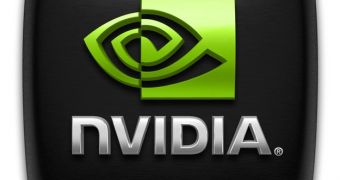After successfully launching the GT200 65nm, branded as GTX 280 / 260, Nvidia is moving on to the next target, which would be the launch of the 55nm version of the GT200 chip. The Santa Clara company should rush the new chip to the market to provide a powerful competitor to AMD's Radeon HD 4870 X2.
The R700 created quite a fuss about a week ago, when AMD allowed a short preview of the card. The dual card presented itself as being faster than GTX 280, but ATI still has a lot to work to do to win the war, especially with Nvidia preparing the GT200 55nm, which should come with shaders and clock faster than its 65nm counterparts. We should expect a tight competition during the back-to-school season.
In the meantime, it's worth noting that Nvidia is going through a rough third quarter, which comes in the aftermath of the second one, when it also registered some losses. The competition with AMD-ATI drove the Santa Clara based company to slashing the prices for its cards. Also, some of the Nvidia chips proved to be faulty, which meant another loss in the company's revenues and a drop in the price of its stocks.
After a few years of running in second and not getting too close to the lead, ATI has brought to light the RV770 chip, smaller and better priced, the best it came up with so far. For the time being, Nvidia's GT200 is faster, but it does not go too far ahead of the RV770XT cards. Except with the price, of course.
Nvidia had to drop the selling prices for its GT200 based graphics cards, G92-based products and 9600 and 9500. The result was a crippled profit during this quarter, since the average selling prices went down. Both revenue and profit will be small for Nvidia, for the reason that it won't be able to make as much money as it used to. Even more, as competition becomes tighter, the general trend might be a further drop in the prices for graphics cards.
It seems that Nvidia has another weight on its shoulders right now, as it has to convince its shareholders that the situation is still fine while, contrastingly, making less money per chip.

 14 DAY TRIAL //
14 DAY TRIAL //